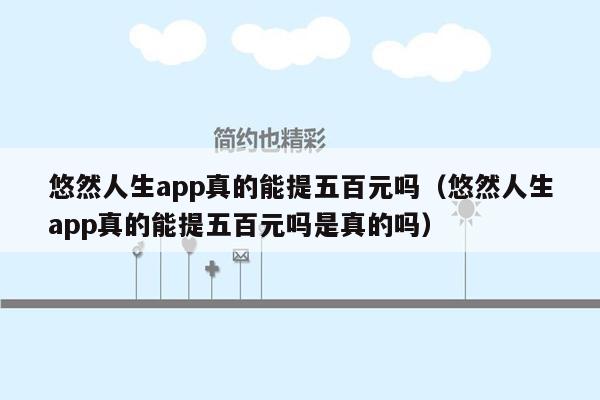如何查看代币的合约源码(如何查询代币合约地址)
本文目录一览:
用Go来做以太坊开发④智能合约
在这个章节中我们会介绍如何用Go来编译,部署,写入和读取智能合约。
与智能合约交互,我们要先生成相应智能合约的应用二进制接口ABI(application binary interface),并把ABI编译成我们可以在Go应用中调用的格式。
第一步是安装 Solidity编译器 ( solc ).
Solc 在Ubuntu上有snapcraft包。
Solc在macOS上有Homebrew的包。
其他的平台或者从源码编译的教程请查阅官方solidity文档 install guide .
我们还得安装一个叫 abigen 的工具,来从solidity智能合约生成ABI。
假设您已经在计算机上设置了Go,只需运行以下命令即可安装 abigen 工具。
我们将创建一个简单的智能合约来测试。 学习更复杂的智能合约,或者智能合约的开发的内容则超出了本书的范围。 我强烈建议您查看 truffle framework 来学习开发和测试智能合约。
这里只是一个简单的合约,就是一个键/值存储,只有一个外部方法来设置任何人的键/值对。 我们还在设置值后添加了要发出的事件。
虽然这个智能合约很简单,但它将适用于这个例子。
现在我们可以从一个solidity文件生成ABI。
它会将其写入名为“Store_sol_Store.abi”的文件中
现在让我们用 abigen 将ABI转换为我们可以导入的Go文件。 这个新文件将包含我们可以用来与Go应用程序中的智能合约进行交互的所有可用方法。
为了从Go部署智能合约,我们还需要将solidity智能合约编译为EVM字节码。 EVM字节码将在事务的数据字段中发送。 在Go文件上生成部署方法需要bin文件。
现在我们编译Go合约文件,其中包括deploy方法,因为我们包含了bin文件。
在接下来的课程中,我们将学习如何部署智能合约,然后与之交互。
Commands
Store.sol
solc version used for these examples
如果你还没看之前的章节,请先学习 编译智能合约的章节 因为这节内容,需要先了解如何将智能合约编译为Go文件。
假设你已经导入从 abigen 生成的新创建的Go包文件,并设置ethclient,加载您的私钥,下一步是创建一个有配置密匙的交易发送器(tansactor)。 首先从go-ethereum导入 accounts/abi/bind 包,然后调用传入私钥的 NewKeyedTransactor 。 然后设置通常的属性,如nonce,燃气价格,燃气上线限制和ETH值。
如果你还记得上个章节的内容, 我们创建了一个非常简单的“Store”合约,用于设置和存储键/值对。 生成的Go合约文件提供了部署方法。 部署方法名称始终以单词 Deploy 开头,后跟合约名称,在本例中为 Store 。
deploy函数接受有密匙的事务处理器,ethclient,以及智能合约构造函数可能接受的任何输入参数。我们测试的智能合约接受一个版本号的字符串参数。 此函数将返回新部署的合约地址,事务对象,我们可以交互的合约实例,还有错误(如果有)。
就这么简单:)你可以用事务哈希来在Etherscan上查询合约的部署状态:
Commands
Store.sol
contract_deploy.go
solc version used for these examples
这写章节需要了解如何将智能合约的ABI编译成Go的合约文件。如果你还没看, 前先读 上一个章节 。
一旦使用 abigen 工具将智能合约的ABI编译为Go包,下一步就是调用“New”方法,其格式为“Newcontractname style="box-sizing: border-box; font-size: 16px; -ms-text-size-adjust: auto; -webkit-tap-highlight-color: transparent;"”,所以在我们的例子中如果你 回想一下它将是 NewStore 。 此初始化方法接收智能合约的地址,并返回可以开始与之交互的合约实例。/contractname
Commands
Store.sol
contract_load.go
solc version used for these examples
这写章节需要了解如何将智能合约的ABI编译成Go的合约文件。如果你还没看, 前先读 上一个章节 。
在上个章节我们学习了如何在Go应用程序中初始化合约实例。 现在我们将使用新合约实例提供的方法来阅读智能合约。 如果你还记得我们在部署过程中设置的合约中有一个名为 version 的全局变量。 因为它是公开的,这意味着它们将成为我们自动创建的getter函数。 常量和view函数也接受 bind.CallOpts 作为第一个参数。了解可用的具体选项要看相应类的 文档 一般情况下我们可以用 nil 。
Commands
Store.sol
contract_read.go
solc version used for these examples
这写章节需要了解如何将智能合约的ABI编译成Go的合约文件。如果你还没看, 前先读 上一个章节 。
写入智能合约需要我们用私钥来对交易事务进行签名。
我们还需要先查到nonce和燃气价格。
接下来,我们创建一个新的keyed transactor,它接收私钥。
然后我们需要设置keyed transactor的标准交易选项。
现在我们加载一个智能合约的实例。如果你还记得 上个章节 我们创建一个名为 Store 的合约,并使用 abigen 工具生成一个Go文件。 要初始化它,我们只需调用合约包的 New 方法,并提供智能合约地址和ethclient,它返回我们可以使用的合约实例。
我们创建的智能合约有一个名为 SetItem 的外部方法,它接受solidity“bytes32”格式的两个参数(key,value)。 这意味着Go合约包要求我们传递一个长度为32个字节的字节数组。 调用 SetItem 方法需要我们传递我们之前创建的 auth 对象(keyed transactor)。 在幕后,此方法将使用它的参数对此函数调用进行编码,将其设置为事务的 data 属性,并使用私钥对其进行签名。 结果将是一个已签名的事务对象。
现在我就可以看到交易已经成功被发送到了以太坊网络了:
要验证键/值是否已设置,我们可以读取智能合约中的值。
搞定!
Commands
Store.sol
contract_write.go
solc version used for these examples
有时您需要读取已部署的智能合约的字节码。 由于所有智能合约字节码都存在于区块链中,因此我们可以轻松获取它。
首先设置客户端和要读取的字节码的智能合约地址。
现在你需要调用客户端的 codeAt 方法。 codeAt 方法接受智能合约地址和可选的块编号,并以字节格式返回字节码。
你也可以在etherscan上查询16进制格式的字节码
contract_bytecode.go
首先创建一个ERC20智能合约interface。 这只是与您可以调用的函数的函数定义的契约。
然后将interface智能合约编译为JSON ABI,并使用 abigen 从ABI创建Go包。
假设我们已经像往常一样设置了以太坊客户端,我们现在可以将新的 token 包导入我们的应用程序并实例化它。这个例子里我们用 Golem 代币的地址.
我们现在可以调用任何ERC20的方法。 例如,我们可以查询用户的代币余额。
我们还可以读ERC20智能合约的公共变量。
我们可以做一些简单的数学运算将余额转换为可读的十进制格式。
同样的信息也可以在etherscan上查询:
Commands
erc20.sol
contract_read_erc20.go
solc version used for these examples
波场发币教程TRC20发币教程TRX发币教程波场代币智能合约发币教程
波场链的币种叫TRC20代币,部署到TRX的主网上,波场发币教程也很简单,一起学习下吧,波场发币教程TRC20发币教程TRX发币教程波场代币智能合约发币教程,不会的退出阅读模式,我帮你代发
TRC-20
TRC-20是用于TRON区块链上的智能合约的技术标准,用于使用TRON虚拟机(TVM)实施代币。
实现规则
3 个可选项
通证名称
string public constant name = “TRONEuropeRewardCoin”;
通证缩写
string public constant symbol = “TERC”;
通证精度
uint8 public constant decimals = 6;
6 个必选项
contract TRC20 {
function totalSupply() constant returns (uint theTotalSupply);
function balanceOf(address _owner) constant returns (uint balance);
function transfer(address _to, uint _value) returns (bool success);
function transferFrom(address _from, address _to, uint _value) returns (bool success);
function approve(address _spender, uint _value) returns (bool success);
function allowance(address _owner, address _spender) constant returns (uint remaining);
event Transfer(address indexed _from, address indexed _to, uint _value);
event Approval(address indexed _owner, address indexed _spender, uint _value);
}
totalSupply()
这个方法返回通证总的发行量。
balanceOf()
这个方法返回查询账户的通证余额。
transfer()
这个方法用来从智能合约地址里转账通证到指定账户。
approve()
这个方法用来授权第三方(例如DAPP合约)从通证拥有者账户转账通证。
transferFrom()
这个方法可供第三方从通证拥有者账户转账通证。需要配合approve()方法使用。
allowance()
这个方法用来查询可供第三方转账的查询账户的通证余额。
2 个事件函数
当通证被成功转账后,会触发转账事件。
event Transfer(address indexed _from, address indexed _to, uint256 _value)
当approval()方法被成功调用后,会触发Approval事件。
event Approval(address indexed _owner, address indexed _spender, uint256 _value)
合约示例
pragma solidity ^0.4.16;
interface tokenRecipient { function receiveApproval(address _from, uint256 _value, address _token, bytes _extraData) external; }
contract TokenTRC20 {
// Public variables of the token
string public name;
string public symbol;
uint8 public decimals = 18;
// 18 decimals is the strongly suggested default, avoid changing it
uint256 public totalSupply;
// This creates an array with all balances
mapping (address = uint256) public balanceOf;
mapping (address = mapping (address = uint256)) public allowance;
// This generates a public event on the blockchain that will notify clients
event Transfer(address indexed from, address indexed to, uint256 value);
// This notifies clients about the amount burnt
event Burn(address indexed from, uint256 value);
/**
* Constructor function
*
* Initializes contract with initial supply tokens to the creator of the contract
*/
function TokenTRC20(
uint256 initialSupply,
string tokenName,
string tokenSymbol
) public {
totalSupply = initialSupply * 10 ** uint256(decimals); // Update total supply with the decimal amount
balanceOf[msg.sender] = totalSupply; // Give the creator all initial tokens
name = tokenName; // Set the name for display purposes
symbol = tokenSymbol; // Set the symbol for display purposes
}
/**
* Internal transfer, only can be called by this contract
*/
function _transfer(address _from, address _to, uint _value) internal {
// Prevent transfer to 0x0 address. Use burn() instead
require(_to != 0x0);
// Check if the sender has enough
require(balanceOf[_from] = _value);
// Check for overflows
require(balanceOf[_to] + _value = balanceOf[_to]);
// Save this for an assertion in the future
uint previousBalances = balanceOf[_from] + balanceOf[_to];
// Subtract from the sender
balanceOf[_from] -= _value;
// Add the same to the recipient
balanceOf[_to] += _value;
emit Transfer(_from, _to, _value);
// Asserts are used to use static analysis to find bugs in your code. They should never fail
assert(balanceOf[_from] + balanceOf[_to] == previousBalances);
}
/**
* Transfer tokens
*
* Send `_value` tokens to `_to` from your account
*
* @param _to The address of the recipient
* @param _value the amount to send
*/
function transfer(address _to, uint256 _value) public {
_transfer(msg.sender, _to, _value);
}
/**
* Transfer tokens from other address
*
* Send `_value` tokens to `_to` on behalf of `_from`
*
* @param _from The address of the sender
* @param _to The address of the recipient
* @param _value the amount to send
*/
function transferFrom(address _from, address _to, uint256 _value) public returns (bool success) {
require(_value = allowance[_from][msg.sender]); // Check allowance
allowance[_from][msg.sender] -= _value;
_transfer(_from, _to, _value);
return true;
}
/**
* Set allowance for other address
*
* Allows `_spender` to spend no more than `_value` tokens on your behalf
*
* @param _spender The address authorized to spend
* @param _value the max amount they can spend
*/
function approve(address _spender, uint256 _value) public
returns (bool success) {
allowance[msg.sender][_spender] = _value;
return true;
}
/**
* Set allowance for other address and notify
*
* Allows `_spender` to spend no more than `_value` tokens on your behalf, and then ping the contract about it
*
* @param _spender The address authorized to spend
* @param _value the max amount they can spend
* @param _extraData some extra information to send to the approved contract
*/
function approveAndCall(address _spender, uint256 _value, bytes _extraData)
public
returns (bool success) {
tokenRecipient spender = tokenRecipient(_spender);
if (approve(_spender, _value)) {
spender.receiveApproval(msg.sender, _value, this, _extraData);
return true;
}
}
/**
* Destroy tokens
*
* Remove `_value` tokens from the system irreversibly
*
* @param _value the amount of money to burn
*/
function burn(uint256 _value) public returns (bool success) {
require(balanceOf[msg.sender] = _value); // Check if the sender has enough
balanceOf[msg.sender] -= _value; // Subtract from the sender
totalSupply -= _value; // Updates totalSupply
emit Burn(msg.sender, _value);
return true;
}
/**
* Destroy tokens from other account
*
* Remove `_value` tokens from the system irreversibly on behalf of `_from`.
*
* @param _from the address of the sender
* @param _value the amount of money to burn
*/
function burnFrom(address _from, uint256 _value) public returns (bool success) {
require(balanceOf[_from] = _value); // Check if the targeted balance is enough
require(_value = allowance[_from][msg.sender]); // Check allowance
balanceOf[_from] -= _value; // Subtract from the targeted balance
allowance[_from][msg.sender] -= _value; // Subtract from the sender's allowance
totalSupply -= _value; // Update totalSupply
emit Burn(_from, _value);
return true;
}
1
2
3
4
5
6
7
8
9
10
11
12
13
14
15
16
17
18
19
20
21
22
23
24
25
26
27
28
29
30
31
32
33
34
35
36
37
38
39
40
41
42
43
44
45
46
47
48
49
50
51
52
53
54
55
56
57
58
59
60
61
62
63
64
65
66
67
68
69
70
71
72
73
74
75
76
77
78
79
80
81
82
83
84
85
86
87
88
89
90
91
92
93
94
95
96
97
98
99
100
101
102
103
104
105
106
107
108
109
110
111
112
113
114
115
116
117
118
119
120
121
122
123
124
125
126
127
128
129
130
131
132
133
134
135
136
137
138
139
140
}
Next Previous
就是这么简单,你学会了吗?
matic代币合约地址
合约地址是: 0x33D0568941C0C64ff7e0FB4fbA0B11BD37deEd9f
RAMP 代币概览
RAMP 代币在以太坊网络上作为 ERC20 代币发行。为了避免以太坊网络上的高gas费,用户可以选择在币安智能链上持有RAMP BEP20代币,或在Polygon(Matic Network)持有POS-RAMP代币,而不是以太坊
busd代币合约地址
合同地址: scan . io/token/0x 4 fabb 145d 64652 a 948d 72533023 f 67 a 623 c 7 c 53 BUSD货币是基于区块链技术的稳定货币,固定在1:1美元。它由货币证券交易所发行。其全英文名称为币安美元,总供应量为8,011,285 BUSD。
拓展资料
1、 作为一种稳定的货币,市场上流通的每一种BUSD货币都有相应的1美元资产存在银行。以“背书资产总额 = BUSD货币流通总额”为铁律,由独立第三方会计师事务所对资产进行审计,并定期披露审计结果。
2、 BUSD币也是首个拥有独立客户端APP的稳定币,支持二维码扫描支付、收款、转账等功能,满足客户支付、落地商户消费、线上商城购物、线下各大行业消费、跨境支付、各种区块链交易媒体等应用需求。这是区块链推动的一种新的支付方式。目前,BUSD币已与海外商户达成战略合作关系,积极构建和完善稳定币现有生态系统,未来将为客户提供更多应用场景,推动区块链支付朝着共识方向发展。BUSD和USDT哪个更好?从用户的角度来看,我认为有一个主要问题:当我研究一些现有的稳定货币时,我发现它们大多存在系统性风险,这些风险还没有得到解决,在这些系统中,我们不知道如何保护资产。这些资产其实不是公司的资产,而是用户的资产。换句话说,当用户购买稳定的法币货币,如美元或日元时,这些公司实际上持有这些资产。
3、 传统的银行体系有一个办法来处理这个问题,这就是所谓的准备金率。当银行从客户那里获得存款时,他们会保留10%的存款作为准备金,而剩下的90%用于投资,例如购买政府债券或做一些贷款业务。现在这些投资项目都有潜在的风险。如果稳定货币公司或运营商没有说明他们如何处理这些资产,那么可能会出现系统性错误或风险。就像2008年,雷曼兄弟破产了,因为他们在房地产市场下了一个错误的赌注。BUSD,我们的主要优势是我们使用了智能合约的机制,并通过委员会的投票机制确保我们有100%的准备金率。
4、 我们将资产锁定在托管银行,这使得BUSD可证明且可实施地与美元资产1: 1挂钩,这是一个巨大的优势。BUSD的第二个优势,我认为最重要的一个是我们所有的系统都与支付系统直接相连。在我们目前的系统中,我们让用户、消费者直接使用我们的支付系统,我们有一个让商家和用户直接支付的系统。我认为大多数消费者不熟悉加密货币。



